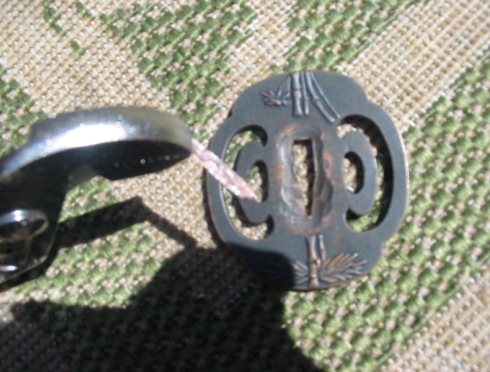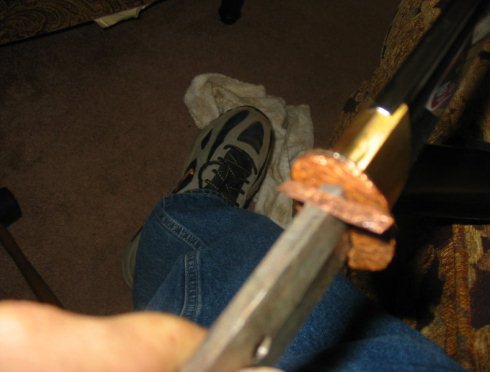How to fix loose tsuba?

If your tsuba becomes loose, your habaki, tsuka, etc. will be under more pressure than expected. Sometimes this is caused by the shrinkage of wood due to seasonal changes in weather. It is not difficult to fix a loose tsuba, although it depends on how the tsuba feels loose.
A simple solution is to add an extra "seppa" (spacer) if the flap is loose vertically (ie, moving up and down from the top of the blade to the bottom of the handle). Another easy way to fix the vertical movement of the tsuba is to take dental floss and wind it in the gap-it is not invisible and can get the job done even if it is not very high-tech!

However, if the movement in tsuba is from left to right, it means that there is a gap between the tang and the tsuba hole through which tanga passes. You can solve this problem by inserting a small piece of folded cardboard/paper.
You can buy other thin septa to fill the gap, or use any incompressible material to make temporary septa to solve this problem. If you don’t want to try to make metal septa, you can try the plastic used for food containers and their lids. After checking that the new septum is in place, make sure that the peg holes in the mound and the nakago are aligned. Please note that the septum should not be too thick. Do not use leather or paper layers.

I hope these tips and this tutorial on how to fix loose Tsuba are helpful to you.
Discover the many attractive options available for Katana swords and custom swords.
Want a unique sword? Feel free to contact us:
Phone: 086 13739276006
Email: [email protected]
Website: www.hanbonforge.com
Custom Sword Page: www.hanbonforge.com/CUSTOM-SWORDS/Custom-Your-Own-Swords

Leave a Comment